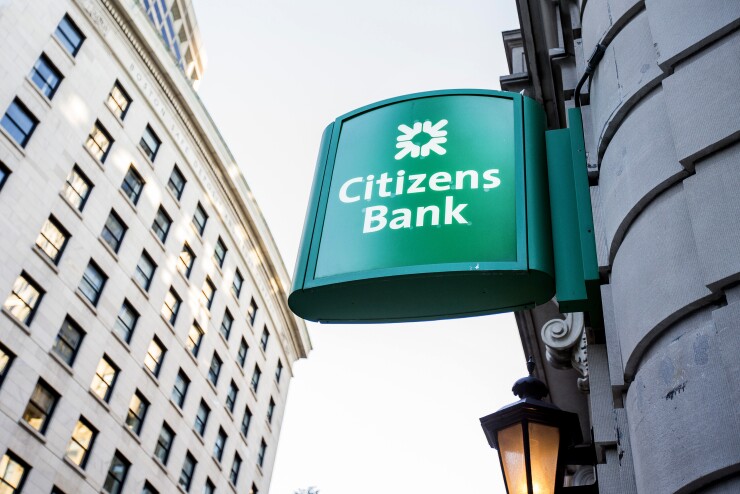When the news started tickling out that buy now/pay later lending was being used at
"We've logically stayed away from some of those categories. It's a risk for consumers," said Eric Schuppenhauer, head of consumer lending and national banking for Citizens. "If BNPL goes to where it's just a bunch of layered purchases on top of each other, it's looking like the types of debt that people were using BNPL to avoid in the first place."
Fintech-led BNPL is suffering from both regulatory pressure from a
As interest rates rise, nonbank lenders that use debt facilities for lending will see significant impact to their unit economics, said Bryce Deeney, equipifi's CEO. "As new regulation is brought in, third-party fintechs will have to adhere to these changes that level the playing field for traditional lenders to compete," Deeney said.
Given its experience, which predates some of the fintech-led BNPL lenders, Citizens is an exception to bank-led installment lending. While most
Citizens has since focused on higher-ticket purchases for BNPL, forging retail partnerships that cover
"These are bigger-purchase items with emblematic brands that are really important in the lives of consumers," Schuppenhauer said, adding the Office of the Comptroller of the Currency and the Federal Trade Commission have regulated Citizens' BNPL service since it launched. "They've kept a critical eye on us," he said.
Citizens, of Providence, Rhode Island, more recently added a virtual line of credit for BNPL, enabling repeat purchases without a new application or managing multiple loans. Called Citizens Pay, the product works for purchases with partners such as Microsoft, Best Buy and GameStop. Citizens is also expanding its BNPL product to health care and is recruiting more electronics retailers.
"We're trying to do more than just put a button on a site," Schuppenhauer said.
To bring more banks into BNPL,
Both fintechs and banks are getting added competition from Apple, which on Monday announced
Banks have a chance to compete by pitching fiscal responsibility, according to Brian Riley, director of Mercator Advisory Group's credit advisory service.
"Responsible lending will help build loan books," Riley said. "The 'approve almost everyone' model does not serve any of the parties involved."
The BNPL firm Splitit, which partners with financial institutions to power BNPL by accessing consumers' unused credit card balances, argues banks are well-positioned to offer BNPL, to a point. Banks can improve their position by accessing tools such as application programming interfaces to reach multiple merchants faster, thus matching the fintech BNPL providers' scale.
"Merchants want a ubiquitous solution that creates the least amount of friction for their consumers, that is priced fairly," said Nanden Sheth, Splitit's CEO. It's hard for a single-bank BNPL solution to scale in a market dominated by agile fintechs that have the ability to support any consumer that passes their underwriting criteria, he said.
"Additionally, merchants do not want the complexity of supporting multiple standalone bank products," Sheth said.
The traditional financial firms that are playing a role in BNPL are doing so largely through partnerships and acquisitions, according to Ralph Dangelmeier, CEO of the payments processor BlueSnap.
There are some exceptions such as JPMorgan Case, which is building its own product. That suggests a wave of mergers and acquisitions is coming as banks try to scale quickly, according to Dangelmeier.
"As regulation gets stricter, any smaller players that offer a competitive advantage in BNPL compliance will have a leg up," Dangelmeier said. "I would expect fintechs that start to do better in those spaces to be appealing acquisition targets."
The regulatory and economic concerns for fintech BNPL lenders are increasing as more borrowers use the product, driving delinquency risk. Through May, 43% of Americans had used BNPL in 2022, up 12 percentage points from 2021, according to
This follows earlier research from Australia's
As the pressure mounts, fintech BNPL providers may promote their products for more purchase types, such as the aforementioned supermarket purchases, as the economy cools. That furthers the risk for BNPL fintechs, Dangelmeier said.
In recent months, valuations for BNPL fintechs have dropped significantly, often by more than
This late payment performance data from consumers — and a cost of capital that's more expensive for fintechs and less expensive for banks — creates mounting pressure on fintech BNPL firms, Sheth said. That is driving the declining valuations and layoffs. "The business model for legacy BNPL is broken," he said.
Among BNPL fintechs, Klarna, which has positioned itself as an alternative to payment cards, recently introduced a plastic
In an email to American Banker on the subject of competing with bank-supported BNPL, a Klarna spokesperson said the firm's interest-free BNPL products are a fairer and more sustainable way to access credit than bank-supported BNPL.
"The vast majority of our customers pay responsibly, which is why 99% of our lending is repaid and our losses are 30-40% lower than the credit card industry standard, and we restrict the use of our services if a payment is missed to prevent debt from accumulating," the Klarna spokesperson said, adding that Klarna conducts "strict eligibility checks on each purchase."






